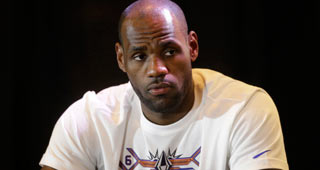On Wednesday, I was fortunate enough to be invited to the media rollout of the next gen versions of NBA 2K14. As a player of the series since at least 2K3, there were both significant expectations and a high level of excitement after the trailer released last week.
What the 2K team has put together for the PS4/Xbox One version of the game is simply incredible for a first generation project. Far too often, game developers use the improved graphical functionality and more powerful processors of next gen systems to simply make a prettier port of an existing property.
While some features that I love, most notably The Association mode as it existed in recent games (with a new mode that has different and possibly more interesting functionality) have been replaced or removed, the vision of the development team shines through in a remarkable way in what feels like a brand new title. I spoke with a member of the graphics team about the challenge of a next generation console and he spent more time talking about the opportunity to work from effectively a blank canvas in that part of the game. That concept has allowed them to make an astonishingly beautiful game early on, from the player models (we got to use the facial technology which was remarkable) to the uniforms to the arenas themselves, everything looks stunning in a way I cannot remember even with plenty of experiences ogling new console generations as a lifelong gamer.
By creating a “materials database” with objects as seemingly insignificant as the stuff that composes phones on the press table and the wires built into the stanchion, they now have the graphical foundation for at least the next few iterations of the franchise. Touches like contacting the manufacturers of the lights (while already knowing the make, model, and actual number of lights in the real arenas) to find out the color temperature for each light creates tools they can use and build off for some time to come. On a personal level, I hope this allows 2K to acquire and execute presentation elements like The NBA on NBC for future versions. I asked about a return of “old school” visuals we saw in NBA 2K12 in future NBA 2K games and received a showing of interest unsurprisingly without a firm commitment.
The animations and little factors were surprisingly strong for a game with so many new facets. The team was genuinely excited about the freedom they have to move away from firm motion capture and develop more fluid animations and reactions. That also allowed them to finally add in wingspans that can actually affect gameplay. Having pieces like that in the game will help now and allow for further tweaks in the coming years to make special players feel even more distinct.
Another extremely encouraging development came from talking in-game strategy with 2K14 Senior Producer Rob Jones. While their promo package showed how coaching emphasis can change defensive spacing, which is incredible, I wanted to know about what factors influenced how well individual players and teams rotate in-game. Defensive rotation plays a pivotal role in the real NBA and felt more arbitrary than it should even as gameplay has become more refined over the last few games. Jones discussed how coaches play a role and that moving a coach from one team to another will carry their personal positive and negative effects on a team with them. However, we all know that individual players need to buy in and factors like defensive awareness for individual players will play a pivotal role in determining spacing as well. Jones and I talked at length about how the one of hardest things to code is handling the imperfections that make the NBA game so interesting. Tying defensive mistakes to poor coaching and flawed players at the same time makes sense as a solution to the issue as long as it is implemented properly.
The new visions for both MyPlayer and MyGM modes will be fascinating to watch as they roll out but I will hold back judgement until we find out more information and I get to see them in action. The small glimpse we got at “The Park” component of MyPlayer sounded like a facet that will give many players hours upon hours of awesome experiences and that was just a teaser at the end.
Most importantly, the game plays well. It was not possible in about ten minutes of game time to truly compare it to previous games in the series but it felt like the successes and failures were more fair than in previous editions. Sliding off Ray Allen to protect against penetration from LeBron James led to a wide open look, as it should. Creating turnovers and pushing the pace on offense produced points as long as the ballhandlers could control it, reflecting the real game. We all know that it takes far more time to adequately assess how it plays but the early impressions were surprisingly good.
Brand loyalty continues to be a crown jewel in business because it can give a company or product a built-in and reliable customer base that can eliminate some risk and help promote the product if it is good enough. After years of creating high-quality NBA games, 2K could have easily rested on their laurels and made something closer to a port and devoting their resources next year to making a true next generation game. Instead, they jumped that path and are putting out what feels like an entirely new game that can stand up on its own as a premier launch title and be a remarkable jumping off point for the rest of this console generation. This vision, dedication, and desire to push the envelope were on full display and I am beyond pumped to see how the final game turns out.



